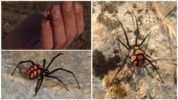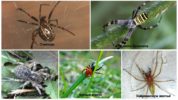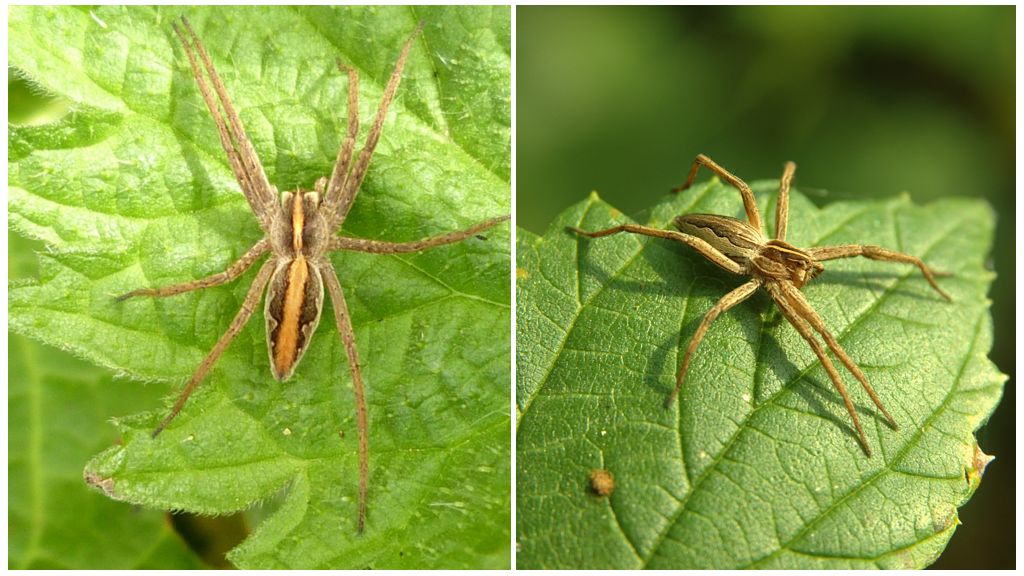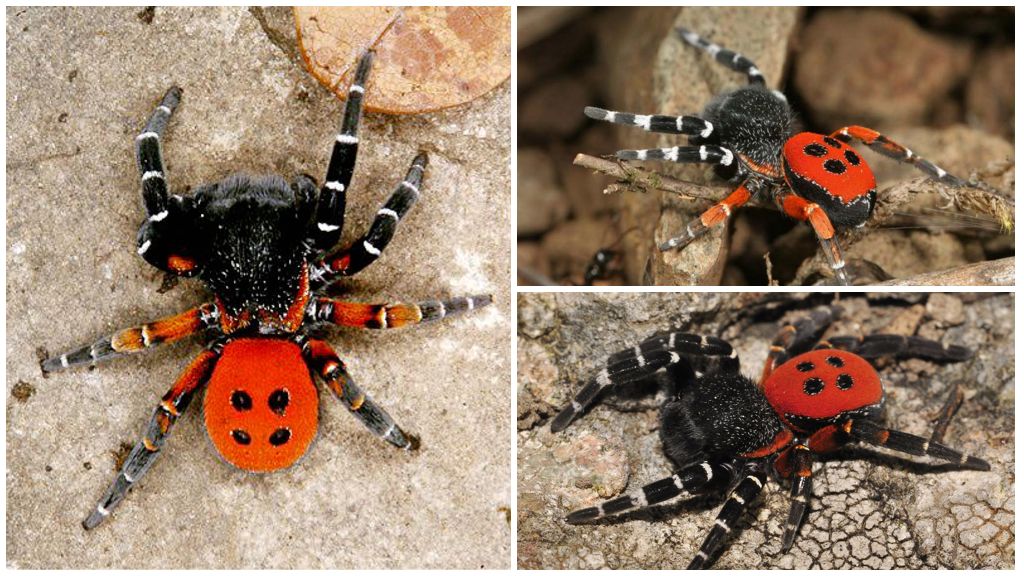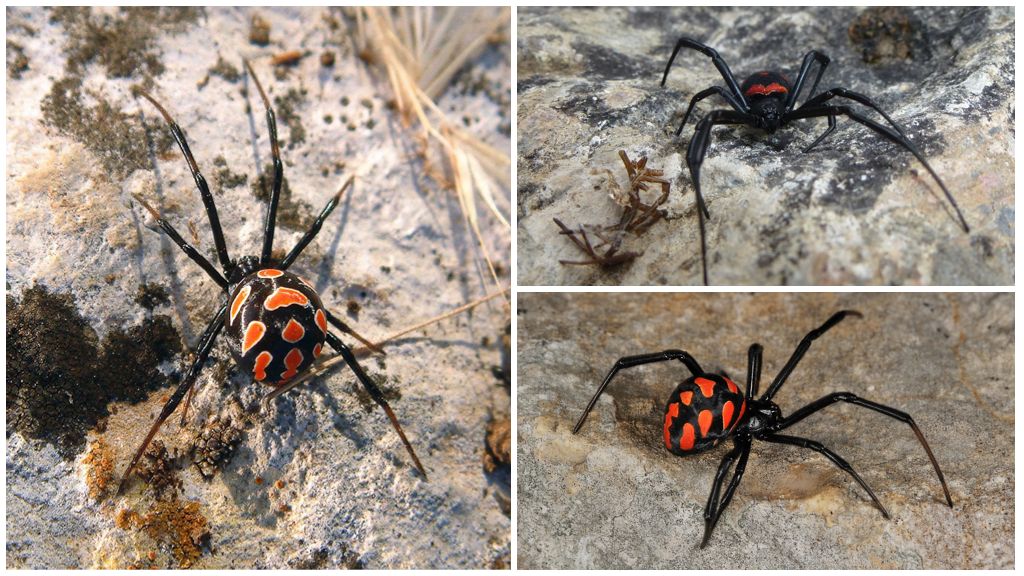- Karakurt
- Spiders of the Astrakhan region
The spiders of the Astrakhan region in terms of species diversity are very similar to composition of arthropods of Kazakhstan and Kalmykia. The climate of the Lower Volga region is characterized by dry summers and relatively warm, snowless winters. In such conditions, it is easy to survive the southern poisonous arachnids. In the Astrakhan region of poisonous spiders, there are 6 species. Even more there lives completely harmless and even beneficial to humans. species of spiders.
Poison spiders
If we approach the determination of the poisonousness of an arthropod from the standpoint of “how much the animal bites”, then the poisonous species of spiders in the Astrakhan region are not even 6, but 8 species. Need to include two more argiop: Argiope Brunnich and lobed. This is taking into account the fact that all spiders are actually poisonous. The question is the dose and strength of the poison. Argiopes bite very painfully, but for a person their bite is not dangerous. But the bite of the other 6 can do serious harm and even lead to death. These 6 include:
- karakurt;
- heiracantium yellow;
- black erezus;
- steicode Paykull;
- the steatode is triangular;
- south russian tarantula.
On a note!
The spiders of the South Russian tarantula, dangerous for humans, can only be credited with a stretch of the eye. His bite is only a little more poisonous than that of an argiope. But the argiope does not walk at night, and the tarantula can climb into the tent.
Karakurt
The most dangerous spider in the Astrakhan region. Also ranked as the most poisonous arachnid of Russia. This species prefers a desert and semi-desert habitat. It occurs in the steppe regions. Due to the high danger of the arthropod, its photo and description is always present in tourist memos. The bite of a karakurt acts very quickly, and opinions about the folk remedy for neutralizing the poison differ.
Interesting!
The method consists in cauterizing a bitten place with a burning match. You need to cauterize the first minute after spider bite. Some experimenters believe that this method is effective. Others who have tried say that, in addition to poison, a person also gets a burn. It is impossible to neutralize the poison in this way, and anticaracourt serum is needed.
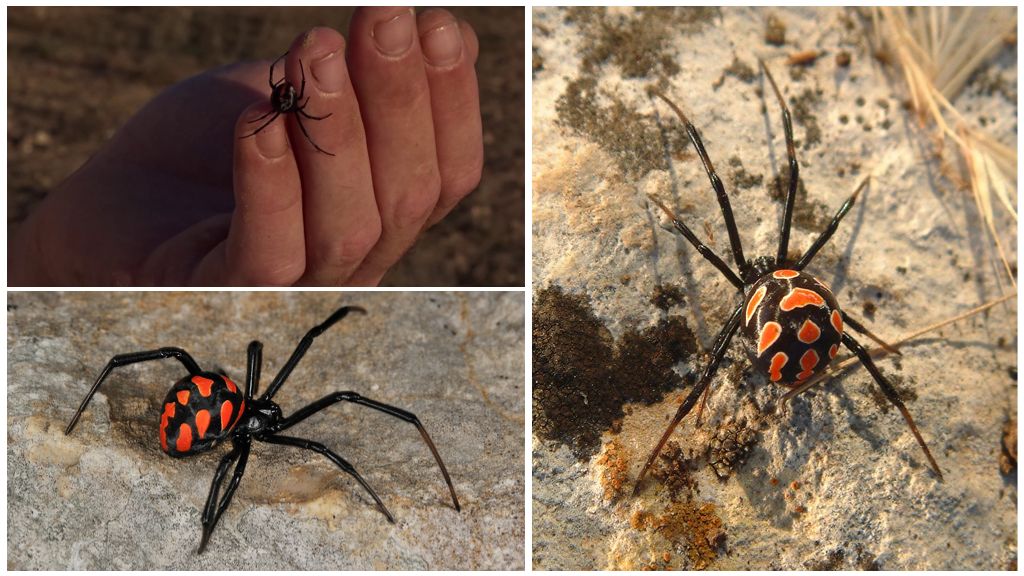
Karakurt - a black spider with a spherical abdomen. Thirteen-point karakurt has large red or white spots on the abdomen. Karakurt Dahl is completely black. In color, the spiders of these two species are similar to their "cousins" of steatodes, which are often called false karakurt. The body length of the female is up to 2 cm.
Karakurt nests are arranged in burrows of other animals or at the foot of bushes. It can settle under stones. Weaves a disordered web, which catches small insects.
On his own initiative, karakurt does not attack, but if you disturb him, he bites without thinking. During the breeding season, spiders can penetrate people's homes.
Heyrakantium yellow
The Turkic name of this animal is sack. He received the epithet "yellow" for color. Yellow heiracantium preys on agricultural pests and usually lives in fields and in the steppe. Recently, it began to infiltrate cities.
Thanks to powerful chelicera, adapted to bite through the chitinous shell of beetles, it easily breaks through human skin. The spider bite is not life threatening, but very painful.
Black erezus
One of the burrowing spiders in Astrakhan. It populates cracks and voids under the stones, burrows of beetles.Hunts, attacking from a shelter on a victim approaching him. The erezus female is completely black and could be confused with karakurt, but she never leaves the shelter. Her abdomen is more elongated.
On a note!
The male cannot be confused with any other type of spider: his abdomen is red in color with 4 black dots on the upper side. Erezus hunt on various invertebrates, including scolopendra and salpug.
Steatode
All steatodes are similar in shape and size to each other and to karakurt. They differ in the pattern on the abdomen. Steatodes are found in the same locality as their more dangerous relative. A steatode bite is painful and causes soft tissue swelling. It takes a relatively long time: from several hours to 3 days. But it does not lead to the death of a healthy person. Death can be in children or the elderly with a weakened immune system.
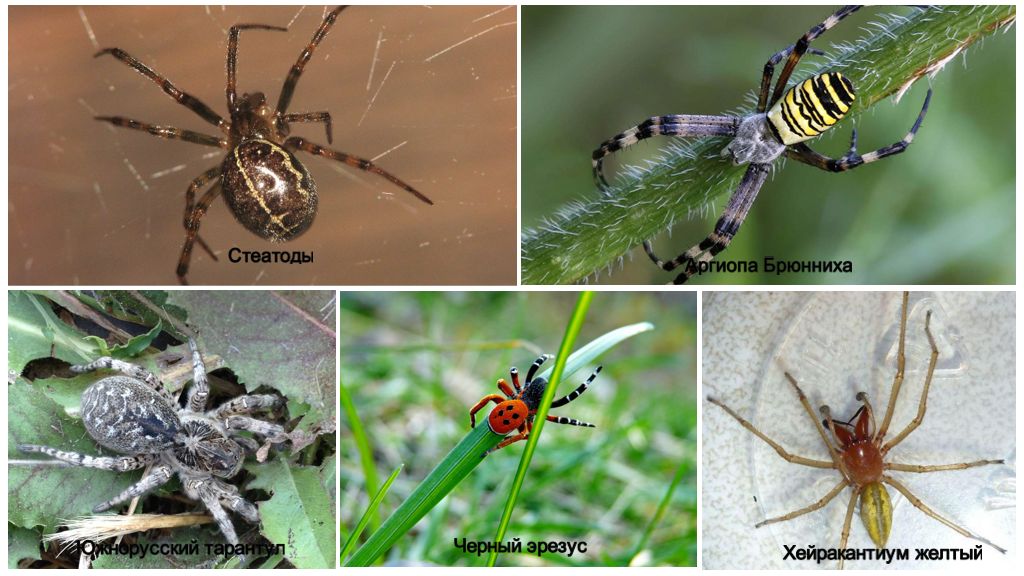
South Russian Tarantula
Belongs to the family wolf spiders. It lives in dry steppes and semi-deserts. It can be found in forest-steppes. Leads an active nightlife. Catching up prey on his feet. He doesn’t build a web. It lives in independently dug vertical holes up to 60 cm deep. Usually up to 20 cm.
One of the largest Astrakhan spiders. The body length of a female can be up to 3.5 cm. It is also the least poisonous. A bite of a South Russian tarantula can lead to local tissue swelling and itching within a few hours.
Orbers
In the Astrakhan region there are two types of argiop and several types of crosses. Argiope Brunnich or the "wasp spider" is the most poisonous of all. The bite is painful. But pain and irritation disappear after 3 hours. Argiope lobed bites less sensitive. Crosses safe for humans.
On a note!
Not all crosses have a characteristic pattern on the upper side of the abdomen. The meadow cross has an even yellow color. There is no cross on his abdomen.
Are found orbiting wherever they can hook the ends of a fishing net: steppes with tall grass, forest edges, gardens, parks and more.
Safe spiders
In addition to the poisonous in the Astrakhan region, there are many other types of spiders, not only safe for humans, but also helping them in the fight against agricultural pests:
- horses;
- side walkers;
- pizaurides;
- hayers;
- Lynxes
- diggers;
- funnel;
- other types of heiracanthums;
- other types of wolf spiders.
The gnaphosis spider-digger has a pure black color, but you can confuse it with karakurt only from fright: it has a massive abdomen of a cylindrical shape.
Habitat horses and bokokhodov - grassy spaces. They can be found in parks and gardens, where they lurk their prey, sitting on flowers and other plants.
